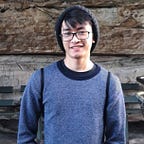Designing Solutions for Water-Deprived Communities
How to address the Manila Water Crisis
When the Manila Water Crisis broke out back in 2019, I was anxious because our community might be disconnected from access to water and we might have to line up for our share of water. Fortunately, we live in a gated community near the House of Representatives where most of the congressmen, legislative staffs, and politicians live so we were not affected. However, just outside our subdivision, an informal settler community in Sitio Talanay, lined up to hours for their limited share of water. People sacrificed a day of income from their livelihood, just to get a container-full of water.
While Manila is having a water crisis, an Indigenous community in Sitio Haduan, Mabalacat, Pampanga is, for the first time, enjoying their clean and stable access to clean water. Sitio Haduan may be an indigenous community, but in not less than 1-kilometer away from the ancestral lands lies aqua planet, a luxurious water park, supplied with a steady source of water.
5 Million Filipinos Lack Access to Safe Water
These are not isolated issues. In the Philippines, despite being surrounded by water, 5 million Filipinos lacks access to clean water. In NCR, 12% of the population, mostly from low-income and informal settlements, still lacks access to clean water. Places like Sitio Haduan now belong to the 25% of the rural areas who have access to clean water.
As a young change maker, we entered the Youth Social Innovation Labs 2020 by UNDP & Youth Co:lab, to tackle this issue. Out of 111 applications, our team was one of the twenty-eight (28) teams chosen to undergo the 4-Day hackathon & training session.
To solve the water disparity in the Philippines, we want to use the power of Artificial Intelligence (AI) using Artificial Neural Network (ANN) and Support Vector Machines (SVM) to optimize and predict water demand and consumption per district.
The current power dynamics between the consumers and concessionaires, who supply water, plays an influential role in the water disparity in the Philippines. One of the key factors that water concessionaires use to decide on which area to supply with water, is the number of households with the ability to pay. Therefore, if you live within an informal settlement your access to water might be a community-tap or might be at risk of interruptions from time to time. If we are to solve the water disparity and inaccessibility in the Philippines; we must build tools & platforms that support and acknowledge water as a human right.
We designed AGOS as a platform to inform and empower the public about water related issues in their area and support local government units in creating policies for water accessibility and disaster mitigation. By providing a free public platform, low-income communities who are often affected by water stress and interruptions will now have the access to monitor their own water utility bills & consumption. It will help households save on their water utility expenses. It can also help water concessionaires to optimize water distribution and management and map out areas currently not covered by steady source of clean and potable water.
To finance the public platform, we provide a private platform (PaaS) for commercial business and industrial companies to optimize their water consumption and predict their water demand. Thus, saving on both utility cost and water wastage. The revenue model scales with impact, as we acquire more clients, we are able to provide a more accurate model for the public.
Data collection will be an important process in the building an accurate AI model. In some cases, data might not be available to the community due to varying factors, which is why we employ low-tech solutions such as training community leaders to collect water-data from the community. Through this method we can generate micro-jobs within the community, providing another source of income and at the same time building more water conservation advocates on a grassroots level.
We believe that AGOS creates solutions that bridges technology and community. We aim to empower communities through a more water conscious lifestyle, addressing water disparity, sanitation, and hygiene, reducing economic effects of water wastage. AGOS aspire to be a platform pushing for accessible, safe water and sanitation for all. To provide convenience and to increase productivity in school and work without the fear of water interruption; and to honor the dignity and right to water of every Filipino.
In the span of four (4) days we built the model for AGOS to solve water disparity and ensure water for all Filipinos, unfortunately, we did not win the hackathon and lost to better teams at that moment. Does it mean the end for AGOS? A hiatus.
AGOS might be shoved in an idea box for quite a while, but the issue of water disparity and inaccessibility will stay the same. We hope that more advocates will take up on the challenge to design solutions addressing the issue that may or may not use our solution. We encourage our fellow youth and students to create more solutions for marginalized communities like Sitio Talanay and Sitio Haduan. To solve the Manila Water Crisis, we need a community of young leaders who can shape the future that we want, a future that addresses water is a human right provided for all.
I want to acknowledge my superb teammates Kim Claro for the technical knowledge, Paul Hendrick Cortez on making it more accessible for all Filipinos, Coleen Awit for doing community management and video hosting, and Jefferson Estela for making the platform sustainable and directing the video & script. Special mention to our amazing video producer, Derek Cabatbat. 😎
Want to build solutions for the Marginalized? or tips to improve our model? Connect to LinkedIn here
